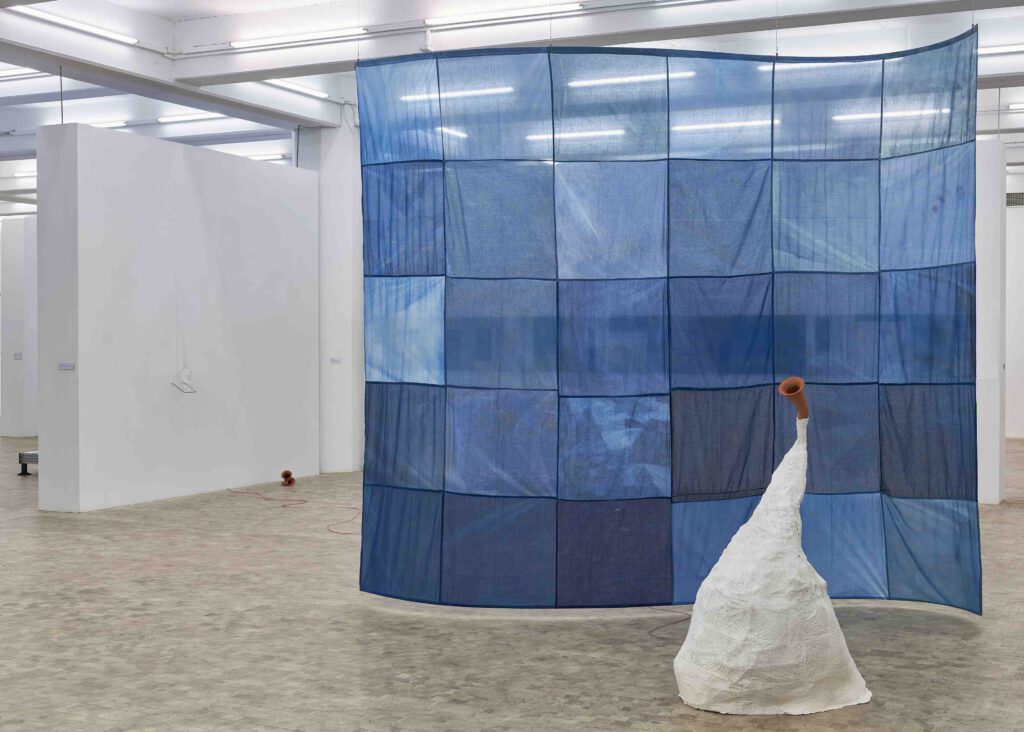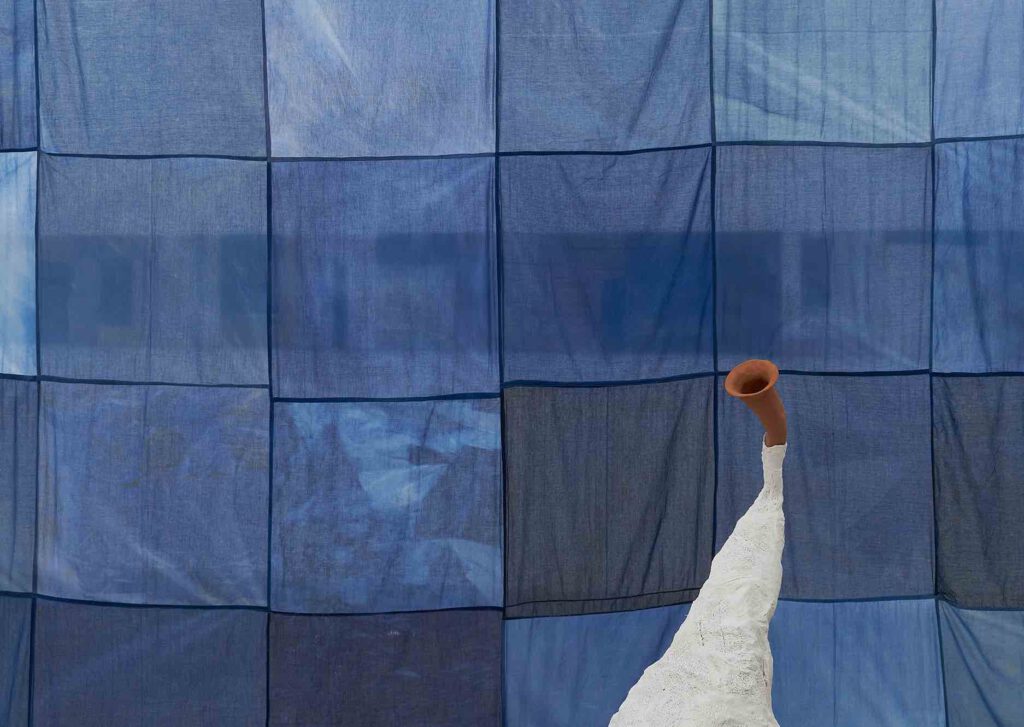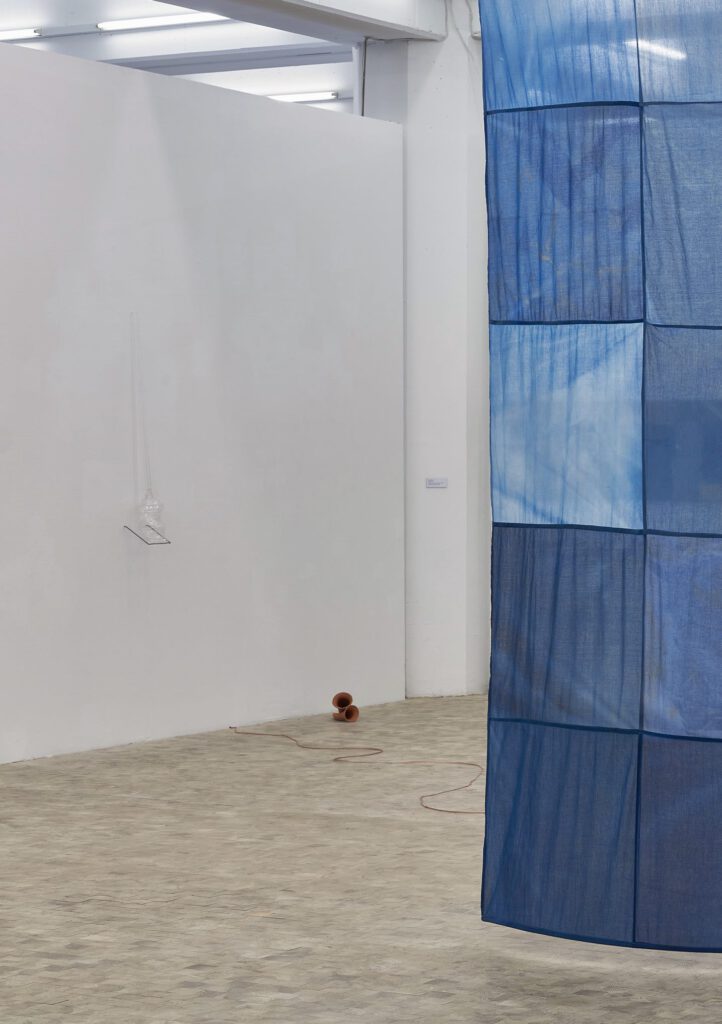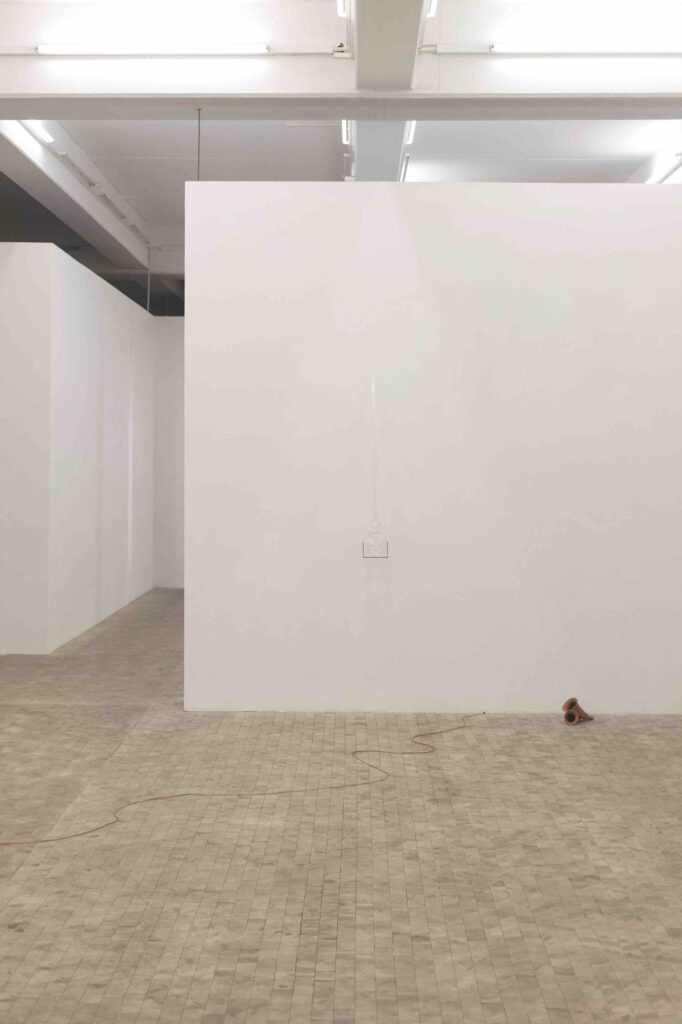




the water that flows through my body also flows through yours
installation with two-channel-sound (loop), cyanotype on fabric, plaster, clay objects and acrylic glass flute
variable size
2021
Gottfried-Brockmann-Preis 2021
Exhibition at Stadtgalerie Kiel
11.12.2021 – 20.02.2022
*
“Wetness Is Everywhere; Why Do We See Water Somewhere?” Anuradha Mathur & Dilip da Cunha
On topographic maps, bodies of water often vanish into the background or are marked in different shades of blue. They are contrasted from adjacent land areas by an unmistakable contour. The separation of land and water as it appears on topographic maps is not natural, however, but one of the most fundamental and enduring measures of understanding and shaping human living spaces, argues Dilip da Cunha in The Invention of Rivers. (1) The ubiquity of wetness (wetness everywhere), i.e., the ongoing, wet to watery exchanges between air, earth, flora, and fauna that extend into the earth’s interior, contradict the binary opposition of land and water and the notion of water bodies as self-contained. How can a material encounter in the field of visual art contribute to dissolving established, intellectual borderlines between different forms of water? Paula König’s installation consists of a large-format, slightly transparent curtain made of square cotton fabrics that have been dyed blue using the cyanotype method. Each of the squares has been exposed and washed out in an individual procedure. For this purpose, König took water samples from different bodies of water, whose qualities and pH values are being reflected in the blue tone. Solar radiation has contributed to the exposure, oxidation and evaporation that caused the previously absorbed water to leave the fabric. From her long-term artistic preoccupation with cartographic forms of representation and work on specific geographies, König has designed a vertical surface that oscillates between image and map, marking a boundary as a spatial divider and at the same time taking up the idea of a permeable membrane. In different waters, König has experimented with self-made instruments that produce sounds with the help of water pressure and escaping air. With sound and resonance bodies, she responds to the concept of bodies of water enunciated by the feminist cultural theorist Astrida Neimanis. As embodied beings, we are first and foremost bodies of water in a watery world, Neimanis explains. Bodies of water are not autonomous, but deeply connected to the winding pathways of water that create and sustain life on our planet. (2) If we are involved in these cycles, Neimanis goes on to ask, where do we get our own water? With whom do we share it? To whom do we pass it on? (3) This question is interesting not only in terms of content, but in terms of a policy and ethics of good coexistence with other human and non-human living beings.
(1) Cf. Joshua Hagen (2019) The Invention of Rivers: Alexander’s Eye and Ganga’s Descent, The AAG Review of Books, 7:4, p. 232. (2) Cf. Astrida Neimanis (2017) Bodies of Water: Posthuman Feminist Phenomenology, Bloomsbury Publishing, Plc, p.65. (3) Cf. ibid. p.6.
text by Lena Johanna Reisner in collaboration with the artist